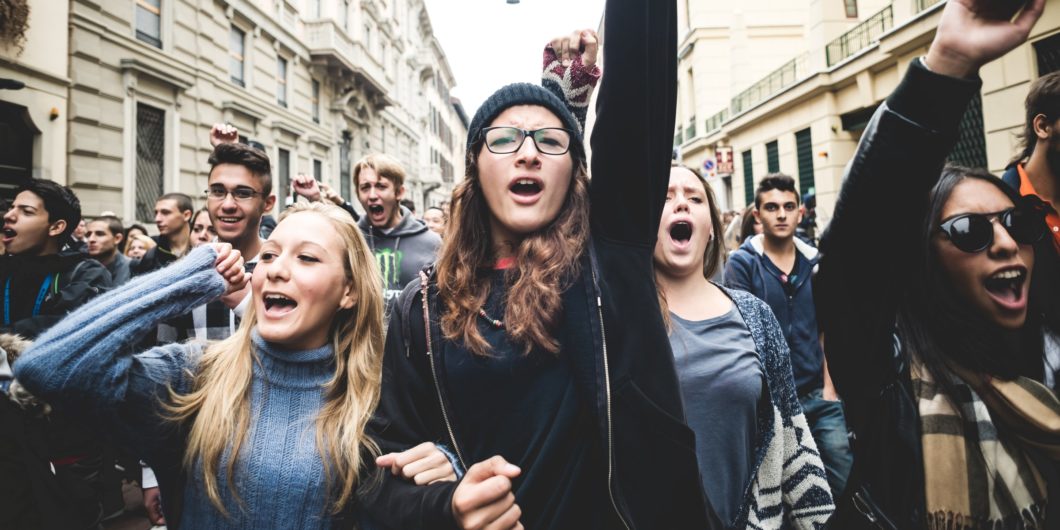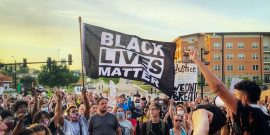Takin’ It to the Streets
Recent political history gives reasons to doubt the efficacy of political protests. I struggle to name something Occupy Wall Street accomplished before it fizzled out. The Tea Party movement may have sent a few extra Republicans to Congress, but the Tea Party’s elected standard-bearers mostly served to turn the House GOP into a grandstanding, obstructionist mess. I am skeptical that the recent pro-2nd Amendment rally in Richmond, Virginia will have any meaningful long-term consequences.
The 2017 “Unite the Right” rally in Charlottesville, VA was supposed to demonstrate the normalization of explicit white identity politics. Instead, more than any other event, it led to the collapse of the so-called Alt-Right. Black Lives Matter is perhaps a more ambiguous case. That movement did help shift the nation’s discussion on race to the left, yet it may have prompted a backlash from many whites, inadvertently increasing levels of racial polarization.
The backlash hypothesis, especially as it relates to protests about race, obviously predates Black Lives Matter by decades. The right-wing pushback from Nixon’s “Silent Majority” against left-wing activists of all stripes was real and may help explain the nation’s move toward the GOP in the last century’s closing decades. On the other hand, it is hard to believe this pushback was more significant than the gains won by the Civil Rights Movement in the 1960s.
Even if a protest movement is perfectly organized, maintains discipline, holds frequent events, and does not attract a gaggle of nutjobs (who will be in every photo taken of the public events), we still may question whether it could move the needle in elections. After all, with party affinities so entrenched, can we really believe many Americans would change their votes because they saw a crowd waving signs and blocking traffic?
Whatever we suspect about protesting’s effectiveness, we can think of anecdotes to demonstrate our case. Fortunately, although it requires a tremendous amount of labor, the political consequences of protest can be considered from an empirical perspective. Daniel Q. Gillion, in his new book, The Loud Minority: Why Protests Matter in American Democracy, seeks to make sense of this question. He makes a strong case that protests do matter, and anti-protest backlash, while a real phenomenon, is less meaningful than many people assume. Gillion, a professor of political science at the University of Pennsylvania, has considered these issues before. His previous book, The Political Power of Protest, argued that protesting is an effective means of securing minority rights.
To make his case, Gillion needed a comprehensive data set of protests in the United States. He largely relies on the Dynamics of Collective Action database, though he also performed his own data collection. He then coded each protest (more than 20,000 of them) according to its size and its ideological perspective.
To examine the myriad ways protest may influence U.S. politics, Gillion merged these data with various other data sets. For example, by comparing protest activity with FEC campaign donation data, he found that protest activities are associated with a surge of donations to the party most aligned with the protesters. However, this was ideologically asymmetric. Liberal protests lead to immediate new donations to the Democratic Party. Conservative protests are, according to Gillion’s analysis, less useful for Republicans in this regard.
Using both historical examples and quantitative evidence, Gillion shows that protests are associated with better-quality candidates entering the political arena.
Despite the entrenchment of ideological and partisan identities in the American electorate, Gillion argues that protest activities can influence voter behavior. In his analysis of the Black Lives Matter protests, he found that communities where protests were concentrated also had higher levels of voter turnout. Further, although there was fierce pushback against Black Lives Matter from some conservative and centrist voices, the political net effect of the protests was positive for the movement, at least when it comes to the variables he was able to measure.
Protests also influence American politics in indirect ways. Candidate quality is an important determinant of election outcomes—is the challenger a pillar of the community, or a College Democrat with too much time on his hands? According to Gillion, sustained protest activity can serve as a useful signal of incumbent vulnerability. Potential candidates will often wait several election cycles before concluding that the conditions are sufficiently favorable. For opportunistic would-be politicians, protests are a sign of blood in the water. If this interpretation is too cynical, one could instead say that protests galvanize strong candidates to enter the ring and work for real change—most candidates would prefer this interpretation of their behavior. Using both historical examples and quantitative evidence, Gillion shows that protests are associated with better-quality candidates entering the political arena.
Most importantly, Gillion provides evidence that protest activity can directly influence election results. Looking at the geographic distribution of protest events, he shows that “protests that espouse liberal views lead Democrats to receive a greater share of the two-party vote in House elections, whereas protests that champion conservative views stimulate support for Republican candidates.”
The data Gillion collected are sufficient to make his case that protests can shift political outcomes. The book also benefits from many real-world examples. Gillion’s explanation of Abner Mikva’s political career and his relationship with protest movements is especially enlightening. His lengthy discussion of the Black Lives Matter movement and its consequences is also compelling.
In his chapter on party convention protests, Gillion discussed the ways protesters at the 2016 Democratic and Republican conventions differed. It is notable that protesters outside the Democratic convention were overwhelmingly liberal, whereas protesters outside the GOP convention were a mix of conservatives and liberals. Conservative protesters seem less willing to go into hostile territory. Gillion’s examination of protesters’ causes also demonstrated that activists in liberal protest groups were more likely than conservatives to have multiple and overlapping lists of grievances. His analysis showed that conservative “protest groups do link up with one another, but to a lesser extent than liberal protests.” The fact that right-wing protesters are less likely than their opponents to share common concerns across issue domains strikes me as an important difference. This may help explain why conservatives (in my view) are rarely successful at creating and sustaining grassroots protest movements that span multiple issues.
The book argues that protests work largely by conveying information and raising the salience of certain issues. A political party benefits when the protests are focused on issues that the party “owns”—civil rights expansion being associated with Democrats, for example, and anti-tax or pro-life efforts aligned with the GOP.
Although the book shows that protests can be effective for conservatives and liberals, the results consistently show that protesting is more effective for liberals, and liberals protest more often. Another unsurprising conclusion is that protests will be more effective if they occur in the context of an election cycle, though persistence over time is also an important attribute of effective protest movements.
Although he provides fascinating information and the book is useful in the sense that it demonstrates protests have value, Gillion provides little practical advice for activists. Readers looking for nuts-and-bolts advice on how to organize an effective protest will unfortunately need to look elsewhere. Gillion is a scholar and this was a dispassionate analysis. It was not written as a handbook for protest movements. This was a reasonable approach for Gillion, but I was nonetheless disappointed. As a leading expert on protest politics, Gillion unquestionably has fascinating and useful insights into this subject. I would be especially curious to know why some protest movements fail to accomplish much of anything, or even prove counter-productive. A brief list of best-practices for protest organizers would have been a useful resource.
The Loud Minority is the result of an impressive amount of work, especially in terms of data collection and coding. Nonetheless, not every part of the analysis is equally compelling. Many models showed a statistically significant and substantively important relationship between protest activity and the dependent variable Gillion was considering. However, he presents models where readers could reasonably question whether the relationships were spurious—perhaps some other variable, not included in the data set, was driving both phenomena. There were other times when I was not persuaded that his models adequately account for period effects. But this is a case where the whole is more convincing than the individual parts. When examined in its entirety, it is hard to complete the book without concluding that protests matter.
Before reading Gillion’s work, I had no grounds to argue against cynics convinced that protests are mostly ineffectual—a way for frustrated Americans to blow off steam while wielders of real power did as they pleased. I am now persuaded otherwise. If you want to cause real change in American politics, hitting the streets is one of your better choices. This is especially true if your resources are limited, as it is less expensive than many other options—though Gillion notes that being endorsed by respected institutions will be helpful.
The Silent Majority is not an all-powerful electoral behemoth, and getting on its nerves is less problematic than many assume. If one dislikes the message of a protest, the most effective way to neutralize its effect is to organize a counter-protest movement, however distasteful one finds that prospect. In the long run, vocal, persistent minorities can have more sway on American political life than insouciant majorities.



